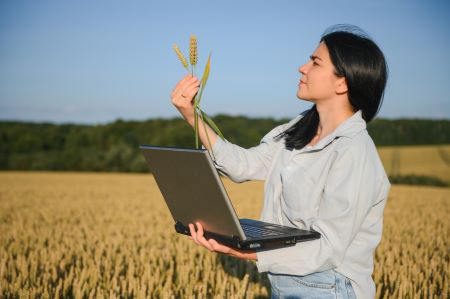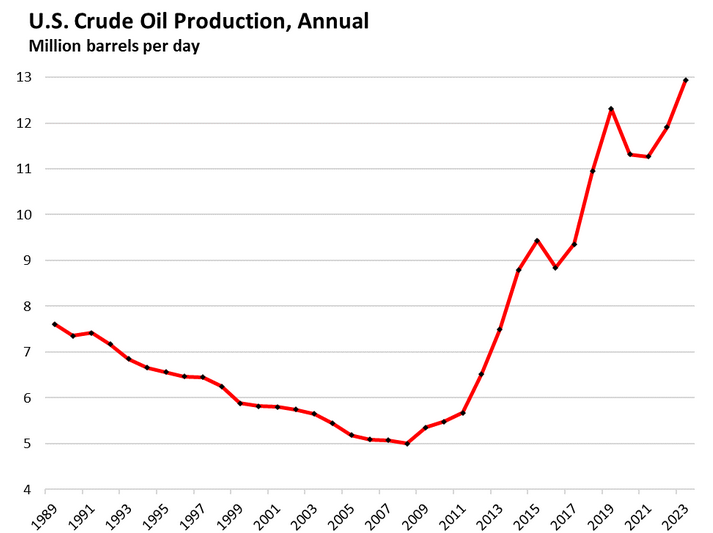Concerns about data governance, returns on investment are slowing adoption of digital technologies in agriculture
 More Canadian farmers are adopting digital technologies but concerns about data privacy, sharing and ownership, who benefits from the data, and the returns on investment are hobbling faster adoption, researchers say.
More Canadian farmers are adopting digital technologies but concerns about data privacy, sharing and ownership, who benefits from the data, and the returns on investment are hobbling faster adoption, researchers say.
Studies show a big barrier is farmers’ lack of trust when it comes to sharing data, whether it’s with digital technology providers, government institutions, local producer associations or university researchers, they said during a webinar presented by the Simpson Centre for Food and Agricultural Policy, in the School of Public Policy at the University of Calgary.
 “These findings show that we need stronger data governance mechanisms in order for farmers to feel more comfortable in using these technologies,” said Emily Duncan (photo at left), a postdoctoral fellow at the University of Regina whose research focuses on the social consequences of digital agricultural technologies.
“These findings show that we need stronger data governance mechanisms in order for farmers to feel more comfortable in using these technologies,” said Emily Duncan (photo at left), a postdoctoral fellow at the University of Regina whose research focuses on the social consequences of digital agricultural technologies.
“We need to have a more complex understanding of trust in data sharing,” she said.
Technology service providers are making a profit from the “big data” that farmers are collecting on their farms, Duncan said. “The issue around compensation for data sharing is really important.”
For her PhD at the University of Guelph, Duncan did a study that involved surveying 1,000 farmers across Canada.
The survey characterized farmers as either “high adopters” or “low adopters” of digital agricultural technologies, or DATs.
High adopters of DATs were using technologies such as variable-rate application of pesticides and herbicides, computerized decision-support systems, satellite imagery and other DATs.
Low adopters tended to only use technologies such as auto-steer on their harvesters and tractors or some kind of computer program for managing the farm.
The survey found a surprisingly high number (208) of high-adopter grain farmers, Duncan said. “This is a good sign for Canadian agriculture, that we’re seeing more and more farmers adopt [digital] technologies.”
Farmers were positive about DATs’ potential for increasing agricultural productivity, with 55 percent agreeing and 23 percent strongly agreeing that digital agricultural technologies lead to productivity increases.
However, they were more skeptical about such technologies offering reliable returns on investment, (ROI), Duncan noted. “That ROI piece is still a big question for a lot of farmers.”
Farmers who owned the most farmland perceived a higher ROI from digital agriculture technologies compared with farmers who rented land or were acquiring land, the survey found.
This may be because farmers who own a lot of land have substantial equity in that land to invest in technologies with a potential ROI, compared with farmers whose bottom line goes into renting or acquiring land rather than into new technologies, Duncan said.
When it comes to sharing data, the survey revealed regional differences. Farmers in Saskatchewan had the highest percentage (30 percent) of those who said they’d feel uncomfortable sharing summarized production data with other farmers. In contrast, only 15 percent of farmers in Quebec responded that way.
Duncan pointed out that digital agricultural technologies present a risk from cyberattacks, the so-called “hackable farm.”
However, research shows farmers were not well aware of what they needed to do – and what they needed their tech providers to do – to enhance cybersecurity practices on their farms, she said. Her study offered a list of recommended cybersecurity best practices.
She noted that Agriculture and Agri-Food Canada has created a working group on cybersecurity and agriculture focused on policy development and learning opportunities.
Duncan’s survey also asked farmers to look 30 years into the future at the anticipated impacts of digital agricultural technologies.
“Farmers were really concerned with the decline of rural communities, decreased access to farmland, the hold that corporate power has on the agri-food sector, and the increase in the digital divide,” she said.
However, farmers also were positive about the ability of digital agriculture to solve labour shortages and address environmental challenges in agriculture. “They envision farmers and robots working together,” Duncan said.
“So far, we don’t necessarily see digital technologies replacing farmers or even farm labourers, but rather changing the nature of the work.”
Farmers have numerous concerns about sharing data
 Sabrina Gulab (photo at right), a postdoctoral associate at the Simpson Centre for Food and Agricultural Policy, did a study that included a survey of agricultural producers in Alberta, Saskatchewan and Manitoba. The survey collected data on 587 producers.
Sabrina Gulab (photo at right), a postdoctoral associate at the Simpson Centre for Food and Agricultural Policy, did a study that included a survey of agricultural producers in Alberta, Saskatchewan and Manitoba. The survey collected data on 587 producers.
The survey found that 68 percent of producers were adopting and using digital agricultural technologies, compared with 32 percent who weren’t adopting DATs.
Sixteen percent were high technology adopters (those using more than 60 percent of the DATs listed in the survey). In comparison, 84 percent were low technology adopters (those using less than 60 percent of the DATs listed).
Of the producers who were using DATs, 39 percent were making high use of collected data to make farm management decisions. However, 52 percent were making low use of the data, and six percent weren’t using the data at all after acquiring digital agricultural technology.
The survey revealed that a significant number of farmers (41 percent) had little understanding of the terms and conditions in the contract with the tech service provider. Forty-two percent had moderate understanding of the contract and only 17 percent had complete understanding.
According to the survey, the difficulties farmers encountered in using the data they collected included:
- Lack of management services on their farms: 57 percent.
- Lack of knowledge in how to use the data after collecting it: 56 percent.
- Lack of user-friendly interface for understanding the data: 80 percent.
- Lack of confidence in a support system or lack of a support system for the digital technology equipment: 63 percent.
“The role of knowledge and support from service providers is very crucial when it comes to using data after the adoption of the equipment or technology,” Gulab said.
This highlights the importance of capacity-building efforts, training programs on data use and data management, and workshops to enhance producers’ confidence in handling agricultural data, she said.
Proactive producers – those who take initiative, plan ahead and actively seek information – were 15 percent more likely to use the data. In comparison, producers who perceive digital agricultural technologies as risky were 9.6 percent less likely to use the data.
The perceived risk of DATs as a barrier “suggests that uncertainty regarding technology performance, data security and potential financial losses discourage producers from fully integrating digital tools into their operations,” Gulab said.
Addressing these concerns through better risk communication, transparent data policies and demonstrations of technology benefits could help alleviate fears and encourage adoption, she said.
When it comes to farmers and their data, a 2019 study led by Australian researchers found that the absence of legal and regulatory frameworks around the collection, sharing and use of agricultural data contributes to the range of challenges farmers face in adopting “smart” farming technologies.
The study’s authors argued that the lack of transparency and clarity around issues such as data ownership, portability, privacy, trust and liability, and benefit-sharing in the commercial relationships governing smart farming all contribute to farmers’ reluctance to engage in the widespread sharing of their farm data.
“At the heart of the concerns is the lack of trust between the farmers as data contributors, and those third parties who collect, aggregate and share their data,” the researchers said.
The survey Gulab incorporated in her study revealed similar and significant concerns among Canadian producers about data governance, trust in sharing farm data, and policies and regulations around digital agricultural technologies.
For example, regarding concerns about data governance:
- 83 percent of producers had concerns about data privacy.
- 89 percent had concerns about data ownership.
- 87 percent had concerns about data sharing.
- 75 percent had concerns about data benefits going to DAT providers.
As for producers’ trust in sharing farm data:
- 88 percent don’t trust digital tech providers.
- 73 percent don’t trust local producer associations.
- 63 percent don’t trust university researchers.
- 91 percent don’t trust government institutions.
- 77 percent don’t trust neighbours.
- 55 percent don’t trust anyone or want to share their data with anyone.
As for producers’ perceptions of policies and regulations around digital agricultural technologies:
- 80 percent said producers don’t know the policies and regulations.
- 78 percent said the legislative environment wasn’t supportive.
- 85 percent said DAT manufacturers exploit the environment of data sharing.
- 78 percent said the government doesn’t consult producers when making policies or definitions.
- 65 percent said there’s a need for robust legislation.
Create trust between farmers and digital tech providers
The findings point to the importance of tech providers seeking the consent of producers for data sharing, Gulab said. “Producers may be more willing to engage with digital systems when they have control over their data and understand how it is being used.”
Strengthening data-sharing agreements and privacy assurances could further boost confidence in using ag data, she said. “We need good regulations to protect the data privacy and data ownership of the producers.”
Gulab’s study made several recommendations, including:
- Increase the number of field demonstrations of digital agricultural technologies by service providers to promote awareness and adoption by producers.
- Develop and support platforms for knowledge dissemination and exchange among producers, researchers and service providers.
- Organize events and initiatives that foster trusted relationships between service providers and producers, encouraging the exchange of information and best practices.
- Improve access to information regarding data ownership, usage and governance to build trust and encourage data-driven decision-making in agriculture.
- Strengthen the inclusion of producers’ voices in policy documents to ensure their perspectives and concerns are addressed.
- Promote a better understanding of policies and regulations that govern data protection, ensuring producers are informed about their rights and responsibilities.
Developing technologies that work in the Canadian landscape
Stratus Research has since 2017 been conducting surveys of North American farmers on their data-management practices and how they’re using different software platforms.
 In 2017, about one-third of farmers were using software platforms to manage their data. By 2024, two-thirds were using software platforms, said Krista MacLean (photo at right), vice-president of client services for Stratus.
In 2017, about one-third of farmers were using software platforms to manage their data. By 2024, two-thirds were using software platforms, said Krista MacLean (photo at right), vice-president of client services for Stratus.
“We’ve seen a really big jump in the number of farmers that are actually taking these platforms [and using them to manage their data],” she said.
Stratus’ collective data supports the notion that farmers are making more informed management decisions, she said. However, they’re not yet seeing reduced costs and increased farm outputs from using digital agricultural technologies, she added.
To address issues of trust and transparency, the agricultural industry has implemented a voluntary seal of approval for agricultural data transparency for companies and organizations, MacLean said. Several organizations, including Farm Credit Canada, John Deere, Syngenta, Leaf, Global Ag Risk Solutions, and others have signed onto the principles for the seal of approval and received certification.
“It has been the farmers that have driven the core principles of agricultural data transparency,” MacLean said.
However, Stratus’ surveys show less than 10 percent of farmers are aware of what the ag data transparency seal of approval means, she added. “There’s a lot of work that needs to be done from an education standpoint in trying to get farmers to understand what that [seal of approval] means, and what that means if their [tech] provider has that versus not.”
Duncan said there has been a recent shift in Canada away from the “Silicon Valley hype” around digital agriculture and a disconnect between farmers not understanding digital technology and tech firms not understanding the needs of farmers.
“We’re seeing more funds for startups [and] homegrown technologies in Canada,” she said. “We’re really developing technologies that work in our Canadian landscape.”
There are two broad types of digital agricultural technologies: embodied technologies and information-intensive technologies, Duncan noted.
Embodied technologies – like auto-steer for harvesters and tractors – are easy to adopt because they don’t require farmers to change existing management practices, she said.
In contrast, information-intensive technology, such as computer decision-support platforms, requires farmers to learn a new skill by sifting through all the data, examining on-farm maps and interpreting what the data means.
“Farmers who are more data-literate are going to use those more information-intensive technologies,” Duncan said.
Another thing farmers and tech providers are realizing is they have to be attentive, especially with current trade tariff disputes and the geopolitical situation, to where data is being stored and ensure that data from Canadian producers is stored on Canadian servers, to protect the country’s agricultural sector.
“Who knows what the next set of negotiations around trade in North America is going to look like?” Duncan said. “It is the end of free trade in North America.”
R$
See also: Digital technologies making inroads in Canada's agri-food sector but barriers remain
Canada's agri-food sector needs to accelerate adoption of innovative technologies
| Organizations: | |
| People: | |
| Topics: |
Events For Leaders in
Science, Tech, Innovation, and Policy
Discuss and learn from those in the know at our virtual and in-person events.
See Upcoming Events
You have 0 free articles remaining.
Don't miss out - start your free trial today.
Start your FREE trial Already a member? Log in
By using this website, you agree to our use of cookies. We use cookies to provide you with a great experience and to help our website run effectively in accordance with our Privacy Policy and Terms of Service.





